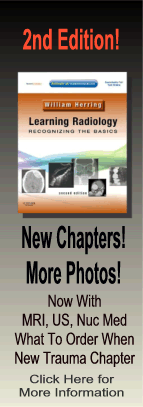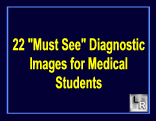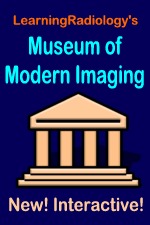| Cardiac | |
|---|---|
| GI | |
| Bone | |
| GU | |
| Neuro | |
| Peds | |
| Faculty | |
| Student | |
| Quizzes | |
| Image DDX | |
| Museum | |
| Mobile | |
| |
Misc |
| Videocasts | |
| Signs | |
Learning
Radiology:
Recognizing
the Basics
Now Available
on the Kindle
and IPad
LearningRadiology Imaging Signs
on Twitter
![]()
Follow us on
What is the most likely diagnosis?
- 47 year-old male with knee study unchanged in 4 years
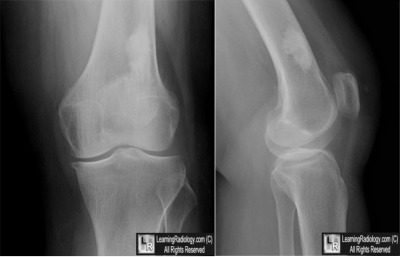
Frontal and Lateral Radiographs of Left Knee
- Bone Infarct
- Enchondroma
- Giant Bone Island
- Metastasis from Renal Cell Carcinoma
- Osteopoikilosis
Additional Image - None
![]()
Additional Images
None
![]()
Answer:
.
3. Giant Bone Island
.
.
More (Click Discussion Tab)
Giant Bone Island
General Considerations
- Bone islands (enostoses) are areas of mature compact bone in cancellous bone in the medullary cavity
- Usually oriented with its long axis parallel to the cortex
- Most common in pelvis, proximal femurs and ribs
- May change in size over time, but change usually takes years
MORE . . .
.
This Week
47 year-old male with knee study unchanged in 4 years |
Presented as a series of cards, this podcast asks some of the most common causes of neuroimaging findings and diseases making it ideal for a quick review. Can be used as either an audio only or audio/video podcast.; Complements Video Flashcard Podcasts 15, 21,25, 38, 42, 46 and 47. |
Some of the fundamentals of interpreting chest images |
The top diagnostic imaging diagnoses that all medical students should recognize according to the Alliance of Medical Student Educators in Radiology |
Recognizing normal and key abnormal intestinal gas patterns, free air and abdominal calcifications |
Recognizing the parameters that define a good chest x-ray; avoiding common pitfalls |
How to recognize the most common arthritides |
LearningRadiology
Named Magazine's
"25 Most Influential"
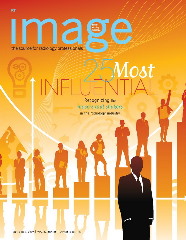
See Article on LearningRadiology
in August, 2010
RSNA News
| LearningRadiology.com |
is an award-winning educational website aimed primarily at medical students and radiology residents-in-training, containing lectures, handouts, images, Cases of the Week, archives of cases, quizzes, flashcards of differential diagnoses and “most commons” lists, primarily in the areas of chest, GI, GU cardiac, bone and neuroradiology. |

